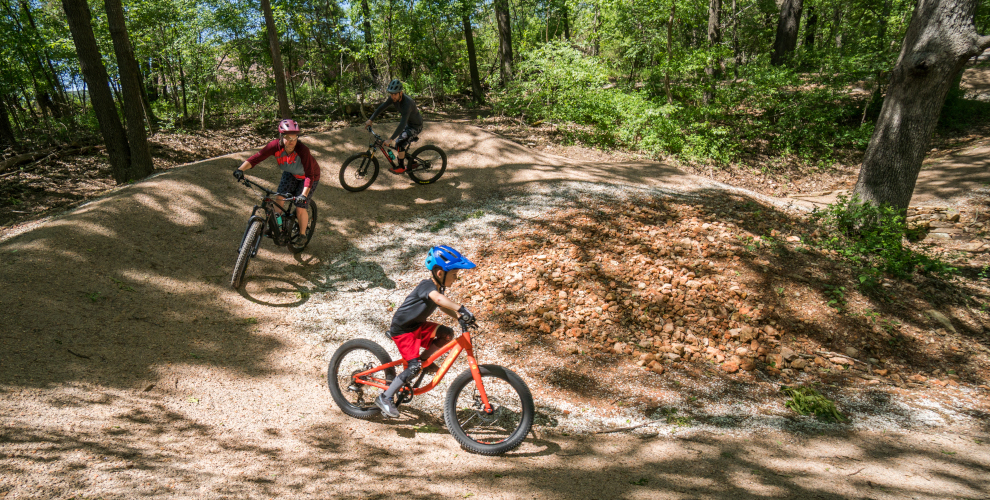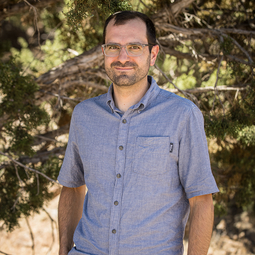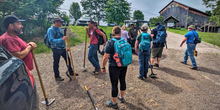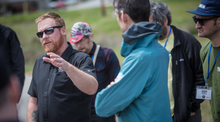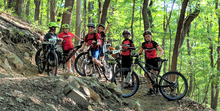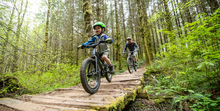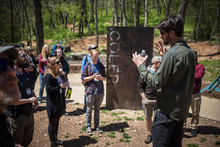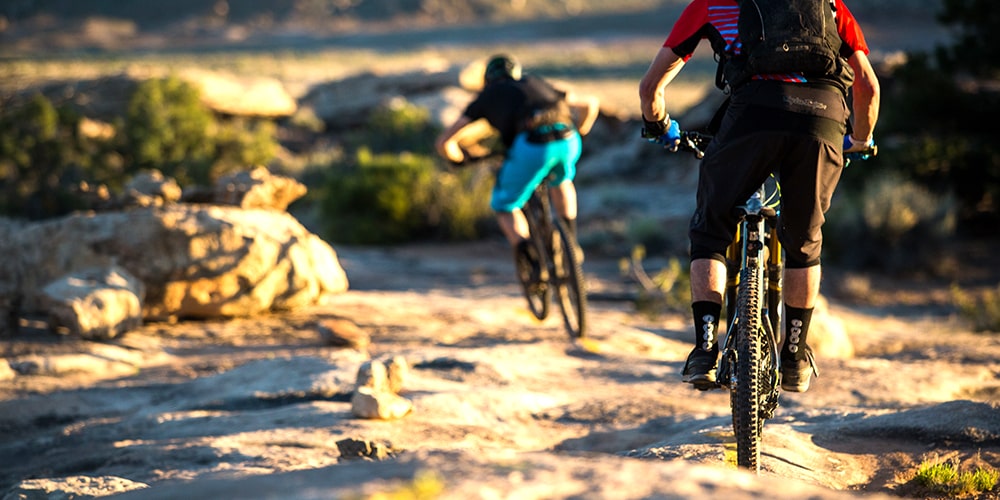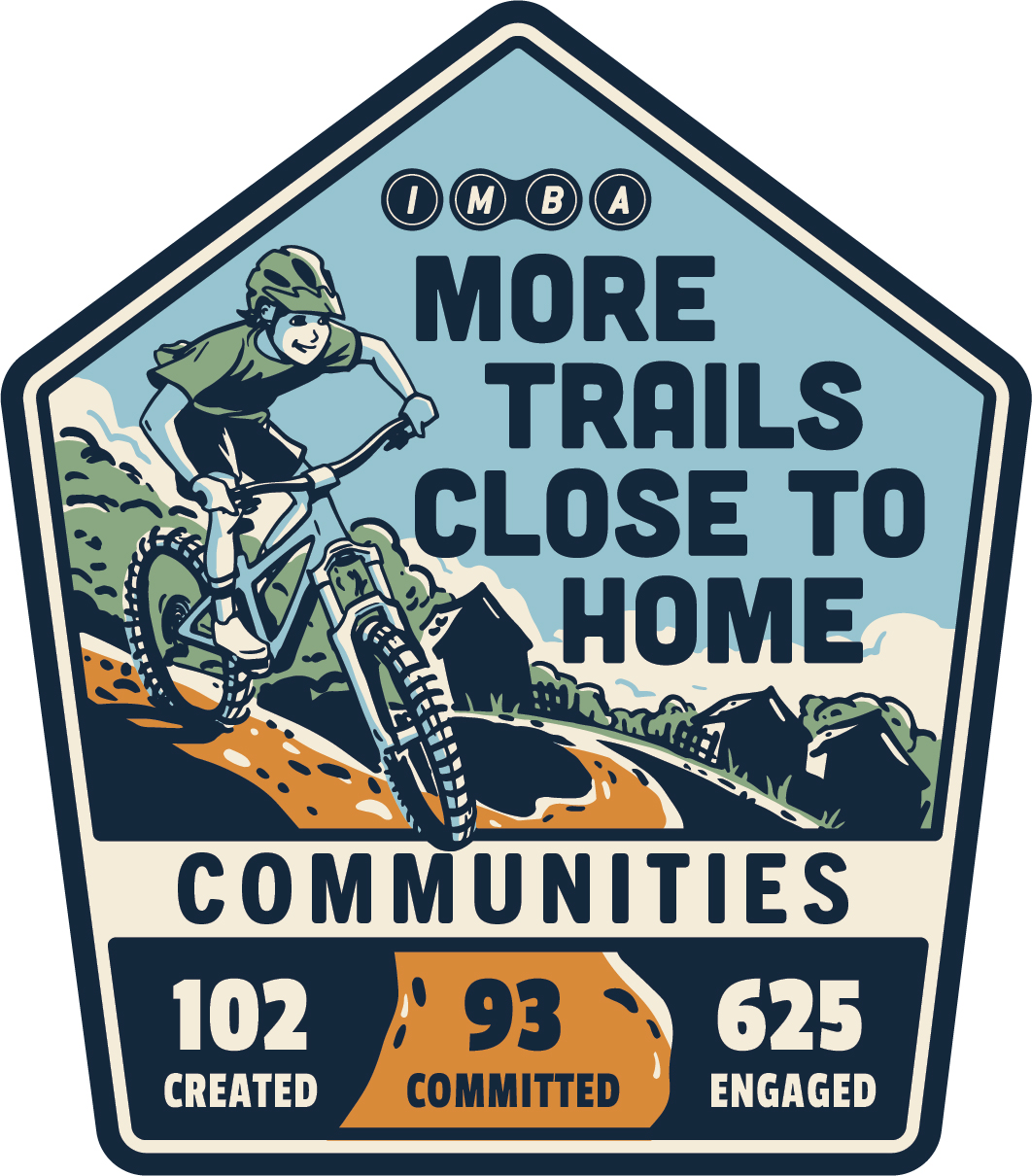Southern Shore Trail Care
Note: This is part one of a conversation between Amanda Carey, NICA President, and Kent McNeill, IMBA CEO. Look out for part two, coming soon!
Why are more kids on bikes and more girls on bikes so important?
Amanda Carey: If you had a bike when you were a kid, you remember: bikes were freedom! That was your first tool to go out and explore. Getting more kids on bikes gives them a sense of freedom early on. Health and wellness starts at an early age. The earlier kids find that love for health and wellness, respect the outdoors and find community, the better.
We also find that NICA tends to capture kids at that age (6th - 12th grade) where it's not really cool to hang out with your parents and kids want to go out and make friends, to make relationships. At that age group NICA gives them community, connection, fun, great coaching, and keeps them connected to the love of the sport.
For girls this is especially important. When they are younger, they are typically more confident in comparison to boys. But at some point, usually around 11 or 12 years old, a confidence gap starts to open up. The younger we introduce kids to sports, especially girls, the more confidence they have in themselves. When they get to those teenage years, if they have learned a sport, their confidence is going to skyrocket and they can take that into other aspects of their life.
Kent McNeill: Yeah that's so important! What's really exciting for IMBA is getting kids outside and connected to the land at an early age, leading to future stewards, conservationists and folks who really want to protect land for their generation and see the value in it because of the joy it brings them. With parents coming along, you're exposing several generations to that value.
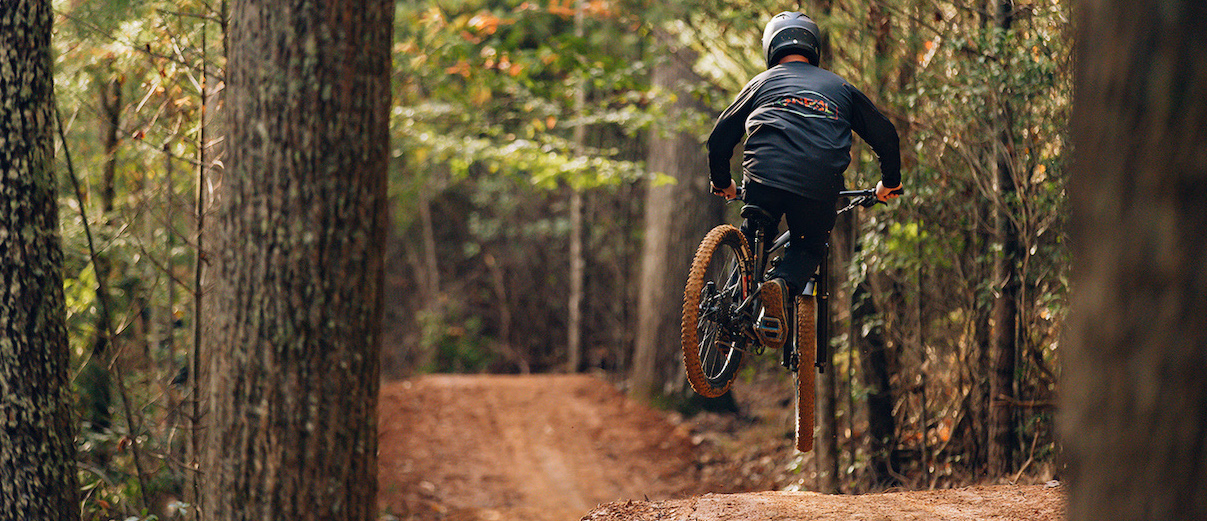
What are barriers to getting kids on bikes, and how do we overcome them?
AC: Well first I’ll take the opportunity to thank the entire volunteer NICA community. But we overcome one of the biggest barriers because of our amazing volunteers: about 15,000 volunteer coaches and 11,000 volunteers that help us run races. There's so much generosity going on in the NICA community that helps us keep the cost low.
The biggest barrier we're facing right now is safe and easy access to trails. Simply put, where we see communities in which kids can ride to their rides, NICA participation skyrockets. If we were able to take transportation out of it that would dramatically increase participation in mountain biking. Currently, having a car, leaving work early to pick up a child and their bike to drive to a trail – the barriers just stack up.
We've asked our NICA community where they have easy access to trails. 40-50% of them are riding to their rides. About half of the Idaho NICA league is operating in Boise because there are so many trails all those kids are riding to their ride so we cannot understate the impact that a safe way to ride to your ride is the biggest limiter at this point. The transportation issue is one that can only be solved by having more trails closer to home and closer to kids because kids at the NICA age absolutely have the skills and the ability to ride to their practices and races.
KM: We need to bring the trails to the kids instead of figuring out how to bring kids to trails. I just had a conversation this week with our colleagues at IMBA Europe and they had framed it for me this way: the American experience of mountain biking begins by loading your bikes up and driving somewhere. In Europe, if they're gonna go mountain biking, many have to ride to their trailhead and that proximity of infrastructure is so important to participation. So that's what we're trying to change here.
Can you pick just one or two components that are absolutely critical to NICA league success?
AC: It really is 1. access to trails closer to home and 2. removing the transportation barrier. It's funny, bikes aren’t the biggest barrier; equipment and bikes are actually one of the easiest things to solve through communities, coaches, bike shops, and donation sites. We are incredibly resourceful at finding and finding bikes and equipment for kids. Safe storage of that equipment is a different story.
KM: We see our role with NICA as programming plus infrastructure for the win; it's not just one or the other. I love that you brought up the point around “bikes aren't the biggest barrier” because a lot of times we hear, “It's a sport of privilege and it's the cost of equipment, that's a real barrier,” but it's also really easy to solve in our experience, through community and corporate generosity. Trail access is a much larger barrier.
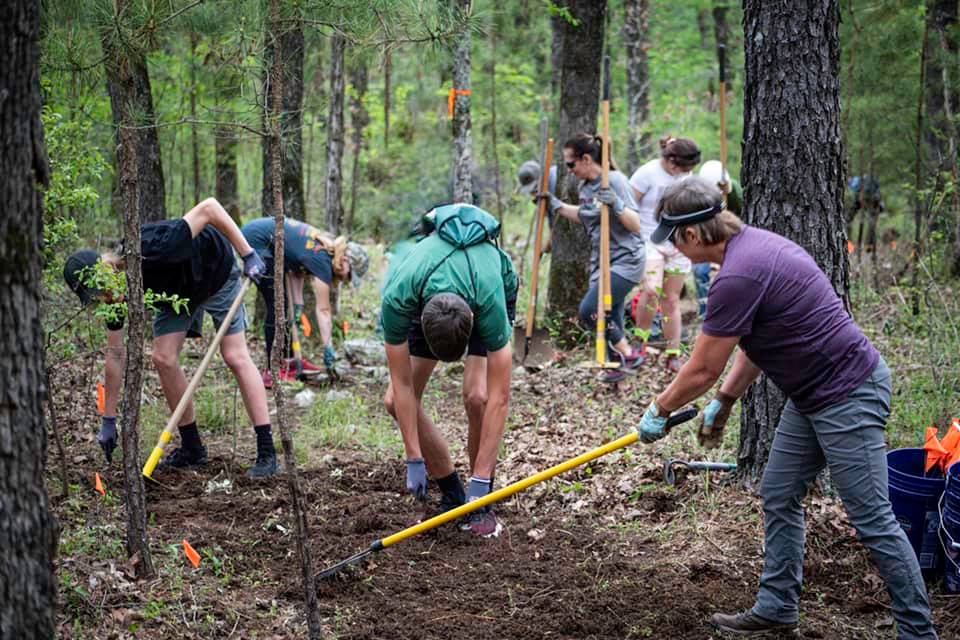
How can the bike industry support NICA through grants for trails? How should they get in touch?
AC: We get a lot of programmatic support and help from the bike industry. So many wonderful companies and folks know the value of involving kids in this sport. We're gonna keep growing but our biggest limiter is going to continue to be access to trails. Where do we put kids and teams? How do we keep kids interested in riding bikes if they're just riding in a grass field? It's a community effort, it's not just about us having the ability to put on races. How do we grow the sport in general? If the bike industry is looking to support NICA, but they're not also looking to support trail development, they're missing a really big piece of that advocacy puzzle.
KM: I couldn't agree more. The support IMBA provides Trail Champions through advocacy, education, and programming helps them through the journey of getting trails and mountain bike infrastructure on the ground. In the industry, there's been a trend of creating trail funds to fund construction, and that's been helpful in getting some infrastructure built. However, the amount of infrastructure that NICA needs long term is much more than those funds would ever be able to realize.
If the industry is looking for leverage of those funds to do more, IMBA’s Trail Accelerator Grant (TAG) provides that opportunity by providing funding for planning. These are the hardest dollars to find in the journey, but they are the most powerful. They unlock community momentum, as well as federal, state, county, and community level funding for construction. We're currently seeing a 12x return on investment with this program. And we could be doing more – TAG is chronically underfunded relative to the number of qualified applications we receive.
We tell industry to reimagine how they deploy that capital. Rather than building a couple of key projects, they could unlock 20 projects with that same funding plus public and private partnerships in those local communities. That's really where we see an opportunity for the industry to invest in a way that helps get the infrastructure built that NICA needs and and helps drive forward a broader community-based engagement of those trails as well. If the industry wants to talk further with you about investment who should they contact?
AC: I'm the best person at NICA to contact, and we've got a team that helps manage partnerships. Industry partners’ support of our programming helps keep the cost low for folks to participate. Any amount of support that anyone wants to put towards either of our organizations is going to come back tenfold because the more accessible we can make trails and participating in NICA programs at the end of the day that's more people on bikes and more people on bikes is just better for everybody.
KM: From IMBA’s perspective, reach out to myself or executive director Dave Wiens. We'd be happy to explore what that investment might look like. We would love to get the Trail Accelerator Grant program better funded so more NICA Trail Champions that apply can find themselves with the powerful tool of a plan in their hands. In doing so we can collectively help unlock investment that will build the infrastructure necessary to get more kids on bikes.
Check out for part two.
